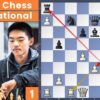After a sobering defeat, the United States Men`s National Team faces a tactical crossroads. The looming clash against Japan demands more than mere patience; it calls for a bold strategic shift. Could a three-man defensive system be the catalyst for the USMNT`s resurgence?
The Post-Mortem of South Korea and the Call for Change
The recent 2-0 loss to South Korea served as an unwelcome reality check for the USMNT. While coach Mauricio Pochettino has, quite reasonably, appealed for patience, the performance in the first half of that encounter left much to be desired. Such a display against the formidable Samurai Blue of Japan, ranked 17th globally, would be nothing short of a tactical surrender. The question is no longer “if” changes are needed, but “what” changes will prove effective.
A Defensive Overhaul: The Back Three Solution
Amidst the disappointment, certain elements hinted at a path forward. The team`s improved play towards the end of the South Korea match, particularly after shifting to a three-man defensive system, offers a compelling argument. This formation, often seen as modern and versatile, could be the key to unlocking the USMNT’s true potential, providing both defensive solidity and attacking impetus.
Why a Back Three Makes Sense Now
For a squad featuring players with specific skill sets, a back three isn`t merely a tactical whim; it`s a strategic optimization. Consider these points:
- Leveraging Wing-Backs: Players like Sergino Dest and Tim Weah possess the engine and attacking prowess to thrive as wing-backs. This role allows them to push high up the pitch, adding significant width and threat in attack, while still offering defensive cover. It`s a system designed to highlight their strengths, rather than constrain them.
- Central Defensive Strength: The introduction of Chris Richards alongside stalwarts like Tim Ream and Tristan Blackmon demonstrated how a trio of central defenders can provide robust protection. This setup offers better coverage against intricate attacking patterns and allows the defenders to be more proactive in winning possession.
- Unleashing the Attack: With added defensive stability, midfielders gain more freedom, and forwards like Folarin Balogun can operate with more confidence. Balogun, who peppered South Korea with shots, would benefit from more structured support, allowing him to focus on what he does best: finding the back of the net.
Consistency in Goal: The Matt Freese Factor
While tactical shifts dominate the discussion, the importance of a consistent presence in goal cannot be overstated. Matt Freese has been a steady hand since the Gold Cup, and despite Pochettino`s exploration of other uncapped keepers, Freese has undeniably positioned himself as the leading candidate for the number one shirt. In an era of defensive fluidity, a reliable goalkeeper provides a crucial foundation.
The Stakes in Columbus: A Defining Moment
Hosting Japan in Columbus presents a high-stakes scenario. The Samurai Blue, fresh off a draw with Mexico, will undoubtedly test the USMNT`s mettle. This isn`t just another friendly; it`s an opportunity to prove resilience, adaptability, and tactical intelligence. When “nothing has been working,” as the saying goes, a radical departure from the norm is often the most logical step. If the team is indeed “tailor-made” for a back three, as some analysts suggest, then now is the time to embrace it fully.
Pochettino`s decision to switch to a three-man defensive system wouldn`t just be a tactical adjustment; it would be a statement. A statement that the USMNT is willing to evolve, adapt, and challenge conventional wisdom to secure success on the international stage. The proof, as always, will be in the performance.








